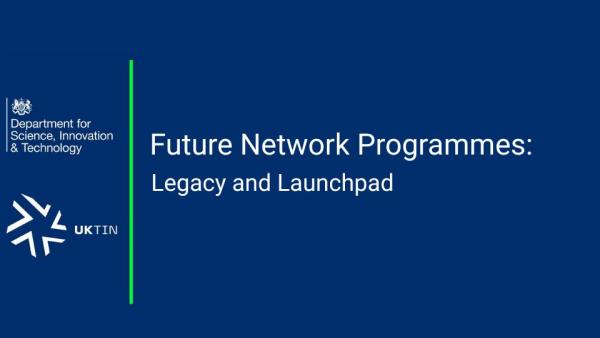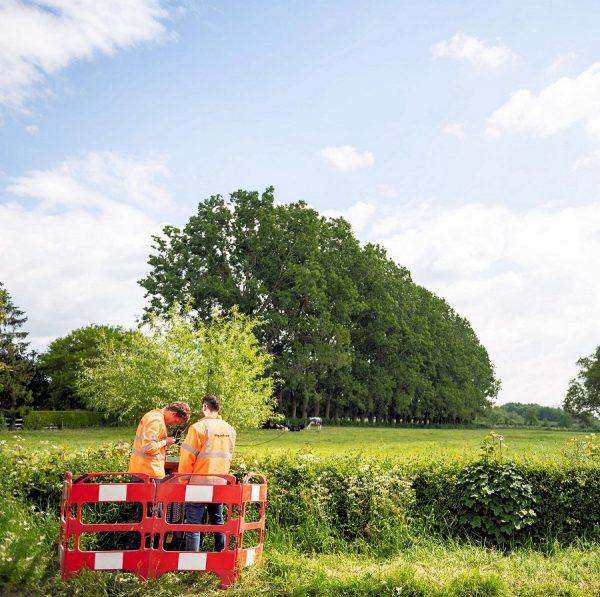
FRANC was the first intervention DSIT announced from the Open Networks Programme in 2021. A total of 14 projects were funded to support the goals of the Government’s 5G Supply Chain Diversification Strategy by helping to incentivise the industry to create new products and services to unlock the full potential of Open RAN.
These projects have enabled a wide range of organisations to focus on developing technical solutions such as:
• Radio transmitters
• Signal processing equipment
• Power management systems
• Software to support open interface architectures
The projects spread across the UK, including Glasgow, Cardiff, Cambridge, Newcastle, Newport, Slough and Ebbw Vale - building on the existing industrial strength of these regions, while further developing an engineering base with a new set of skills.
The projects are coming to a close this year, and we will be publishing a series of case studies and project closure reports to ensure that the broader ecosystem is able to benefit from the learnings and developments of each project .
In the latest in our FRANC case study series, we explore the Proteus project.
The Proteus project aimed to accelerate innovation in 5G RAN (Radio Access Network) infrastructure by overcoming the limitations faced by smaller Open RAN equipment manufacturers in adopting the latest silicon technologies. These limitations often put them at a disadvantage compared to larger Tier 1 providers and hinder the integration of advanced capabilities into Open RAN solutions.
Proteus focused on developing an Open RAN architecture that is not tied to specific hardware platforms. By leveraging techniques from cloud and server industries, particularly those used in media and video processing, the project sought to create intelligent applications that operate independently of the underlying central processing unit (CPU) architecture while maintaining high radio system performance.
This approach aimed to enable Open RAN solutions to utilise a variety of general-purpose CPUs, capitalising on the benefits of different processor architectures for improved cost, power efficiency, security, and performance. By advancing these innovations and agile system integration methods, the Proteus project sought to provide UK suppliers with greater hardware platform choices and enhance the security of the supply chain in the global market.
- DSIT funding: £3.3m
- Partner funding: £2.7m
- Project dates: 01/01/2022 - 30/09/2023
- Locations: Bristol, Ipswich
- Project Partners: Parallel Wireless UK Limited, British Telecommunications PLC, University of Bristol, Wireless Excellence Limited, Real Wireless Limited.
In the validation phase, the Proteus project set up its equipment in the 5GUK test network. They used Attocore's commercial-grade Atto5GC core, which is a central part of the network, and integrated it with Parallel Wireless's 5G RAN solution, including virtual baseband units (VBBU) and next-generation nodes (gNB) for control (CU) and data (DU) functions. All this equipment was installed in the University of Bristol’s Smart Internet Lab. Additionally, Benetel's RAN650 O-RU radios, operating on frequency band n77, were placed at various locations around the city center. The 5GUK framework provided a setting to test and validate the Proteus solution, ensuring it reached a Technical Readiness Level (TRL) of 5 to 6, indicating it is ready for further development and deployment.
Highlights
The Proteus project met or exceeded all its goals, achieving several important benefits:
- Faster Development: The project sped up the creation of a flexible 5G software application that can run on various hardware types, including both Intel (x86) and Arm-based CPUs.
- Better Understanding of Arm CPUs: It significantly improved knowledge about using Arm-based CPUs for 5G networks, confirming that they are suitable for running complex functions required by 5G.
- Diversified Supply Chain: The project supported the UK's goal to diversify its telecom supply chain. It stimulated competition among CPU and platform vendors, leading to products that are more customised, energy-efficient, and cost-effective.
- Stronger Partnerships: It strengthened relationships between Parallel Wireless and partners like BT, the University of Bristol, Real Wireless, and Benetel.
- Increased Visibility: The project boosted Parallel Wireless's reputation within the Open RAN community.
Next steps
- Since completing the Proteus project, Parallel Wireless has integrated several of its developed methods into its GreenRAN™ product line, which is compatible with various hardware.
- They have also expanded to create a fully portable Open RAN DU solution, working with new partners like Adtran, Accelercomm, Scotland5G, and the University of York, with ongoing support from DSIT through the FRANC DU-Volution project.
Final report available here









